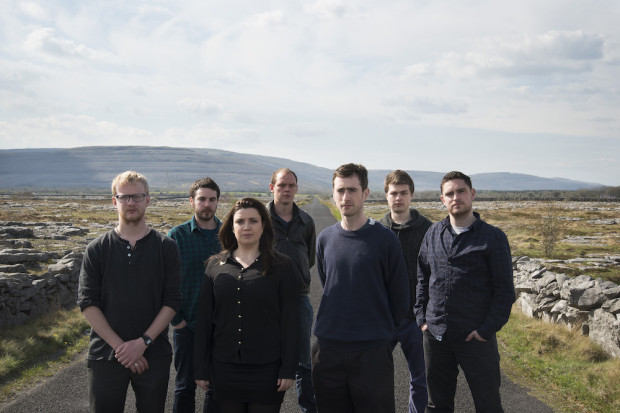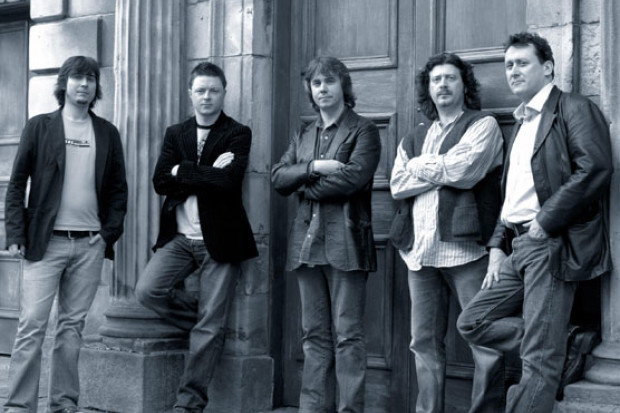A Reply to Lillis Ó Laoire
I have just read, in the January-February 2003 edition of the JMI, your review of the two CDs of sean-nós, which I produced for the Cinq Planetes Label (Sarah Ghriallais and Josie Sheáin Jeaic).
I welcome, of course, the appearance of such a long and detailed text, in terms of both its description of the songs and the commentary thereon. I feel obliged, however, to respond to some of the comments, which I suspect were made in haste.
1. You criticise my sleeve notes for a certain ‘exoticisation of Gaelic song, likening it to flamenco, North African, Asian or Indian singing’. Although I have read and re-read my notes I see no appearance therein of Asia or North Africa. And if I do compare sean-nós with flamenco and with certain types of Indian music, it is for two reasons, which are evident from reading the notes.
For a start, I want to emphasise certain ‘techniques of nasalisation, of movements of the glottis and microtonal variations’. If I chose to cite flamenco and certain Indian music, it is because they are art forms that are generally well known and studied in regard to their universal aspects of vocal techniques – unlike sean-nós, virtually unknown outside Ireland and little studied up to the present. The French public, for whom these CDs are essentially destined, can thus get an idea of what characterises sean-nós in terms of intonation and voice projection. I could have chosen European, African, Oceanian, Martian, lunar, etc., music, a lot less known and studied than flamenco and Indian music, but that would have done little to clarify the observation. To indulge in a comparison of two objects, one little known and the other well known, is a legitimate intellectual method of description, is it not?
Next, the second aspect of the comparison – after that which is similar, that which differs. I also wanted to emphasise that which sets apart sean-nós, that is to say, that which sets it radically apart from other vocal arts using universal techniques that are mentioned above, and so from flamenco and from certain Indian music. ‘The singer remains quite detached from what he or she is singing and so the listener pays more heed to the message than to the medium, to the song itself rather than to the singer. Expressiveness thus depends on the very personalised art of detail of micro-ornamentation, which creates variations between one couplet and the next, on acceleration and deceleration, on pauses between words or the lengthening of certain syllables, on their accentuation or deletion, on the alternation between complex melismata and a very simple melodic line, on the play of timbres and rhythms (the latter organised around the pulse rather than the beat)’
Just before this extract, which shows clearly that there is no confusion between sean-nós and flamenco, for example, the translator writes: ‘ Vocal and physical dynamics … have no place in this genre…’, when the French text is, perhaps, more direct: ‘Pour parler de son esthetique particuliere, le refus de la dynamique vocale … et physique … manifeste…’.
Comparison is not similitude; one compares different objects in order to understand their nature better. Comparativism seems to me a good method of analysis and of intellectual exposition, and that is so for all domains. To think otherwise is a denial of universality, that is, of humanity and of particular ‘cultural’ forms and to fall into the trap of localism where the form under study exists ‘in se’ and ‘per se’. ‘Exociticism’ and ‘localism’ are but two faces of the same coin, localism being coherent only in terms of sterile nominalism, which in the present case – the mysterious tradition of a ‘mainstream European singing’ that you refer to – would bring sean-nós to an absolute isolation in universal music. Just as there are people who believe in the purity of race and culture, are there those who believe in the existence of pure music? Transcendent essences, irreducible to the hazards of history, pure ideas … a conception that is ‘ahistorical and timeless’, to borrow your own terminology.
2. If, in another place in the notes, when talking of the modal character of sean-nós, I wrote ‘… in the early or oriental sense of the term…’, it is to stress the existing difference with the concept of modality such as is understood, for example, in modern jazz. In effect, the European conception of modality, before the revolution of the ‘temperament’ (17th – 18th century), was almost certainly the same as that which is continued in the construction of most of so-called ‘oriental’ music. And much of popular European music (including sean-nós) follows this old tradition, which is no more oriental than European.
3. I am truly surprised by your criticism of my supposed assertion of a ‘common origin’ of sean-nós and certain ‘eastern models’. This criticism is unacceptable – I did not put forward this thesis at any stage, nor do I allude to it in any way, nor, moreover, to any other thesis on the origin of sean-nós, a theme that I willingly left out from my notes (there was no room for it).[1]
You do not review what I actually said in my notes, but that which I did not write – your short sightedness is such that you criticise that which you would like to believe that I think. You claim to read my thoughts, which are not written across my face. Excuse my mockery and my anger, but it is extremely unpleasant to find oneself criticised on the basis of what is not written nor thought. And if I say ‘nor thought’, it is precisely because I do not agree with all those theories that have suggested an ancient Irish culture spawned from an African or oriental influence.[2]
4. You launch an attack on the importance that I attribute to melismatic ornamentation in the description of sean-nós, and if I insist on this point it is especially to define, more specifically, a particular sean-nós, that of Connemara.[3] I do not believe, as you have said, that the importance attached by present day singers to ornamentation ‘emanates … from the competitive arena …’ In addition, I have as much major misgiving about categories such as ‘ahistorical’ and ‘timeless’ as that of a mysterious ‘mainstream European singing’. In addition, I recognise there equally disagreeable echoes of a certain ageless European ‘identity’ which, like the oriental, is but an ideological construction, at best not to be taken seriously, at worst unsettling. In general, I am inclined to accord little respect to well known ‘identities’ which are brandished for the sake of censoring, ostracising, marginalising, admonishing …
On its own, the expression ‘mainstream’ has the odour of an intolerable ‘party line’; arising from that, one decides what corresponds or not to identity, to purity … Beware of that which deviates from the mainstream! Although you have criticised ‘separatist cultural nationalism’, you go on all the same to replace the simple nation by the great mysterious nation that arose in the black of night – Europe …
Let us return to more serious matters, historical and dated. This particular European musical identity to which you refer, in opposing the theory of external influence, exists only since the revolution that gave rise to ‘temperament’ (along with all that implies as regards the conception of modal or tonal scales, of harmony, of voice projection, of the aesthetic …). Before this revolution, vocal arts – characterised by the importance of melismas, and ‘non-classical’ voice techniques – dominated in Europe, just as in many other parts of the planet (Near East for example). Some people even believe that music such as that of Monteverdi was sung in this way (cf. the interpretations of Nella Anfuso), that the Ars Nova was in direct phase with the music, unfairly referred to as Andalusian ‘arab’, etc. One can think what one wishes of this, but the problem is much more complex than a religious belief in a ‘mainstream European singing’ would let you suppose.
The explanation by way of the ‘competitive arena’ is thus a bit scanty. It seems to me that a tendency engendered nowadays by the ‘competitive arena’ is to abandon or to reduce melismatic micro-ornamentation in favour of decorative ornamentation, that is to say macro-ornamentation inspired by an aesthetic and by the methods of that which is called ‘classical music’.[4] I believe, like you, that ‘… traditional audiences did not, in the past, think in terms of base melody and ornamentation …’. And it is for this reason that I wrote, talking of Josie Sheáin Jeaic’s singing, ‘Thus, the great complexity of the latter (i.e. melismatic variation) is never emphasised in a purely decorative manner, but forms an integral part of the continuum in question. It is not a question of ornamenting a melody line externally; the ornamentation lies within the melody, constantly shaping and punctuating it’.
5. I will not be waylaid by your argument on regional styles, Seán Ó Riada, etc., not feeling particularly concerned by your remarks. I will only say that at a point in your argument I do not see what allows you to pretend that I ‘infer that they (the singers) are not artists at all, that they have not striven to achieve the best at their chosen medium’. Let us leave aside today notions of art and artist (more categorisation that presents problems), there is not a single element of my text that goes in this direction: I even affirm the opposite when talking of ‘great art’ in relation to Sarah and Josie.
6. In conclusion, it seems to me that, in spite of myself, I have become a hostage to a polemic that is a purely Irish custom, of which I can only guess the stakes, and in which divergent positions regarding the nature of traditional Irish music confront each other, but with ideological and political implications that are foreign to me. It seems to me that in criticising me, it is not me that you see, that I am but a pretext in settling accounts with other Irish authors. Your irritation has blinded you to the point where you read in my notes something other than what can be found (from 10 lines in 115 lines of text on sean-nós, and without referring anywhere, either good or bad, to the other 105 lines). You have allowed yourself to be swept along in general digressions without much rapport with my modest little text that had no pretensions to originality, but that merely sought to succinctly inform the French public.
I feel wounded from having received baton blows intended for someone else. Why not frankly criticise the author or authors whom you have in your head in an open debate instead of doing so tangentially through someone who happens to be passing by?
p.s. For the readers of JMI, I would like to signal that the book announced ‘devoted to sean-nós, including a bilingual anthology of songs’ will not specifically contain the words of the songs of these first two CDs.
Notes
1. In the forthcoming book, I will have the space to give my point of view on this question, and on many others.
2. One can find strong resemblances between certain Korean and Mongolian melodies, for example, and certain slow airs, without recourse to a theory of influences in one or other direction
3. The term sean-nós seems to me to refer to a vague category that seems to include very different music. It is an impractical categorisation in terms of taxonomy and description.
4. I was able to verify this at first hand during the last Oireachtas at Gaoth Dobhair.
Published on 1 March 2003












